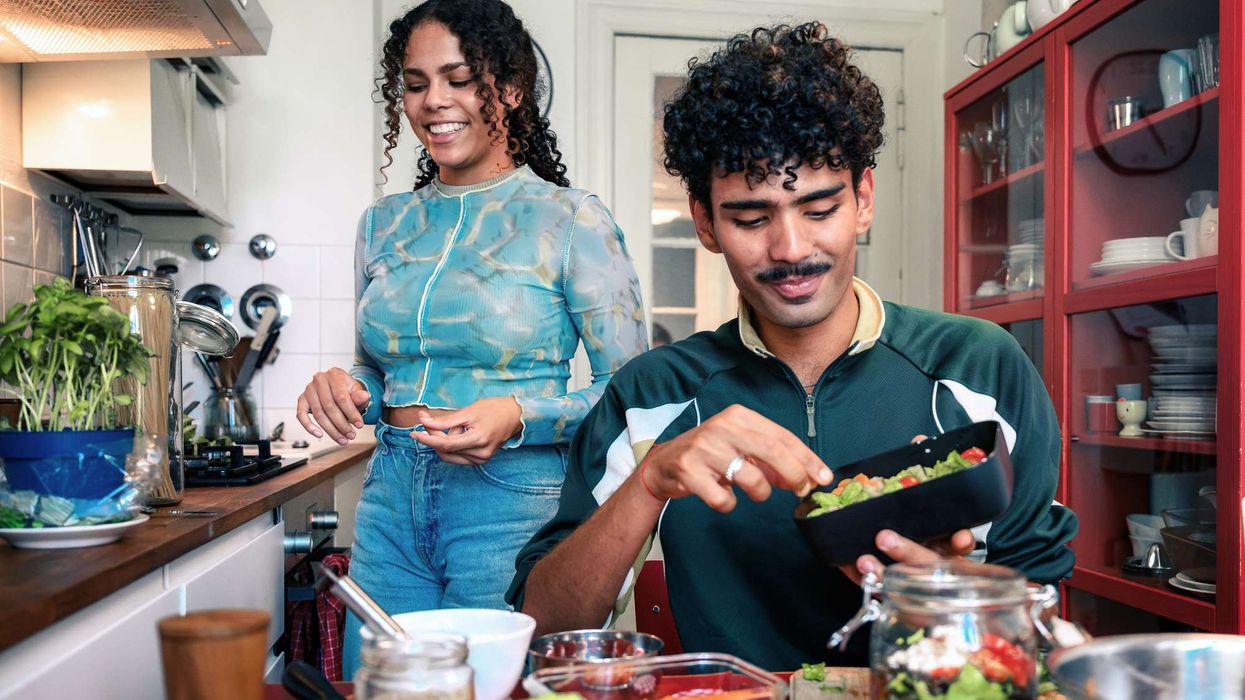WHETHER it is sustainability, surprises or stepping out of your comfort zone, the beauty trends this year will offer something for everyone.
Eastern Eye asked Dimps Sanghani, celebrity hair and beauty expert, entrepreneur and owner of the Tiara Organic salon in the heart of Chelsea, London, to give her 20 top beauty tips, trends and predictions for 2023, in no particular order.
Environment awareness: The hottest theme in beauty this year isn’t a new shade of lipstick, miracle cream or the latest celebrity trend, but reducing your carbon footprint. So, opting for refillable or reusable packaging, and looking out for sustainable products is the new sexy in 2023.
Seeking ‘skin-imalism’: The less-feels-better trend triggered by Covid-19 has spilled over into life after lockdown. The clean look with fewer products, including make-up, will be popular this year. This also feeds into the sustainability and environmentally friendly movement. The key is to have fewer, but better-quality products.

Good skincare: A great skincare regime will never go out of fashion, so find the best regimen that suits your skin type. A product I would recommend is Forest Essentials Ayurvedic Soundarya 24K Gold Serum, which is amazing.
Focus on self-care: Lockdown taught us about self-care and that has now become integral to looking great. There are many affordable options, including relaxation products you can make or use at home that will give you an added glow. You can easily make a coconut oil and
coffee sugar scrub recipe at home, which smells amazing and also nourishes the skin.
Short and sweet: The long flowing locks of recent seasons will be replaced with shorter hairstyles, like power bobs and layered cuts. Similarly, replace longer acrylic nails with shorter options.
Coquette craze: The coquette make-up trend embraces hyper femininity with its pretty look, which includes a sheer foundation, rosy hues, petal-soft colours, shimmering pink and big lashes. It is universal and with its variations, works well on everyone.
blocking properties, or make-up sticks which effectively do the job of two or three products, the popularity of multi-use beauty essentials will continue to skyrocket. Products like Bare
Minerals Complexion Rescue Hydrating Foundation and Concealer Stick save time and take up less space in your make-up bag.
Bold lips: Classic bold lips will always be a winner, and in the year ahead will be even more
dominant. Go for bright reds, pinks, corals, and magentas. Even colours like gold and blue
will work. Glossy lips will also be glorious in the seasons ahead.
Marvellously messy: Looking effortless when it comes to hairstyes is hot, and that is achieved with a ‘messy haircut’ like choppy layers or fringes, a bouncy blow-out or face-framing bobs that draw attention to your features.
Lovely layers: Mixing up shorter and longer layers is a stylish trend that will be popular this year. The butterfly haircut effectively combines short with long layers to add an extra dimension and body to hair, while the octopus haircut has shorter layers on top with thinner, longer lengths underneath.
Cool hair colours: Another way to add adventure to your hairstyle is with a mixture of colours. Whether it is opting for multiple tones or adding blue, blonde or lavender braids, spice up your hair-cuts with vibrant colours.
Subtle side-part: The side-parting has been embraced by celebrities and adds class to a hairstyle. Experiment to find one that suits the shape of your face.
Add accessories: A great throwback look making a return is the use of hair accessories, whether it is headbands, clips, bobby pins or even ribbons. It fits in a with a popular preppy-girl trend that has taken social media by storm.
Big hair: Short styles may be hot, but there are still plenty of choices out there for those who like bigger hair. Retro-inspired blowouts will make you stand out from the crowd.
Spiky bun: The traditional bun remains timeless, but the difference this year is adding extra chic by making it spiky. The on-trend look is easy to create and will get you noticed. Having twists in the bun also work.
Bright eyes: Embrace all the bright colours in your eye-shadow palette, whether it is sky blue, green, coral, shimmery pigments, pretty pops of fuchsia or even something glittery. Go for bold, beautiful summery hues on your eyelids. Even the traditional smoky-eyed look has
pops of intense colour, the brighter the better. If you don’t want to go heavy on colour, omit the eyeshadow and try graphic eyeliners.
Super stain: Lipsticks have always been essential, but this year they are being pushed aside by lip stains which are designed to be absorbed, so last longer and look more natural. But just check you are not allergic to any that you want to use.
Nice nails: The colours may be toned down and lengths shorter, but several 3D trends will make your nails stand out, including shape-shifting designs, colourful outlines, and optical illusion manicures. Olive green and terracotta shades will be popular.
Beautiful brows: The best eyebrow is ultimately what suits your face. The straighter and thicker brow will be more dominant than the curved and super thin style.
Try experimenting: More options this year when it comes to make-up means stepping out of your comfort zone. So try new looks and find one that makes you look and feel great.
Instagram: dimps.sanghani; and see www.tiaraorganic.com for more.










 Mareyah Bhatti , a sustainability strategist and passionate home cookMareyah Bhatti
Mareyah Bhatti , a sustainability strategist and passionate home cookMareyah Bhatti





